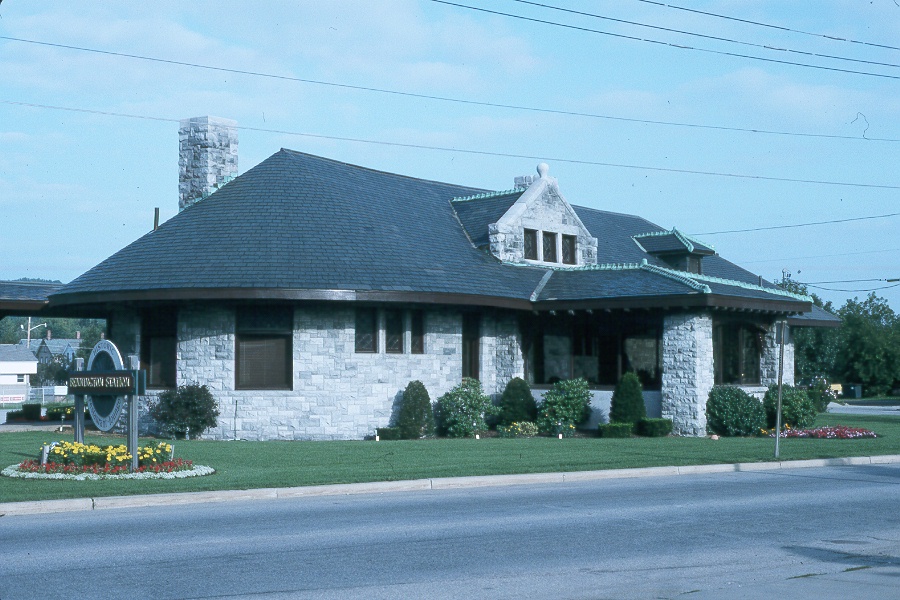Bennington, Vermont
Photo by the author
Over one hundred years ago, the Bennington & Rutland Railroad
began construction of a new depot. The local newspaper of October
5th, 1897, proclaimed the station to be "the handsomest and most
artistic in the state." Prominent local Bennington architect
William C. Bull followed in the then popular style of the great
Victorian architect, H.H. Richardson. Famous for more than depots,
"H.H." designed many now landmark structures. Richardson
created a style that was uniquely applied to many buildings, public and
private. In many instances he collaborated with Frederick Law
Olmsted and his buildings were beautifully landscaped. His style
was emulated by several late 19th Century architects and is still
admired and studied today.
The Bennington & Rutland eventually became a part of the
Rutland Railroad of fond recall for many railfans. The branch line
on which Bennington is situated has an interesting history of it's own,
dating back to the 1850's. The line extended from North Bennington
southwest to Chatham, NY by way of the former Lebanon Springs
Railroad. Nicknamed the "corkscrew" division, owing to
the numerous curves and somewhat rickety trackage, the railroad for many
years operated a milk train from Ogdensburg, NY to Chatham, NY. At
Chatham, the cars were turned over to the New York Central for delivery
to New York City. Milk trains are a legend in themselves on the
Rutland. Far from being "pokey" trains, milk runs were
among the most important and the fastest trains of railroading at the
turn of the century.
The Bennington depot is a tribute to Vermont's native
craftsmen. Blue marble stone for the exterior was hand quarried in
West Rutland. A unique rounded end waiting room with a massive
slate roof covers the structure. The handsome interior fittings of
cherry stained paneling and cornices were contracted to the Eagle Square
Company (now Stanley Tools) of Shaftsbury. A polished marble
fireplace and interior columns topped by Corinthian capitals rise to the
12-foot-high ceiling. The interior space is surprisingly large, and is
elegantly sheathed in hardwood. A porte-cochere provided arriving
passengers a dignified entrance way. A long platform canopy
provided passengers protection from the sometimes harsh Vermont
elements.
Despite the branch line status of the railroad, (Rutland's
mainline passes through North Bennington) some eighteen trains a day
moved north and south during the peak year of 1915 before automobiles
effectively eliminated the once frequent, convenient train service of
rural Vermont. Passenger service evaporated during the Depression
year of 1933, and the station fell into various uses such as a State
Liquor Store, a Nash automobile dealership, building supply warehouse
and even as a dining hall for a local college. Since 1986, the
building has housed a railroad theme restaurant, which your writer had
the pleasure of sampling while on a Vermont vacation several years ago.
"Four Stars" for Bennington!
